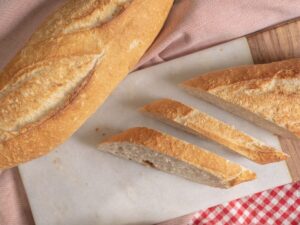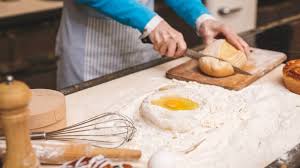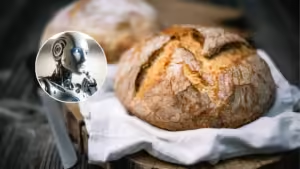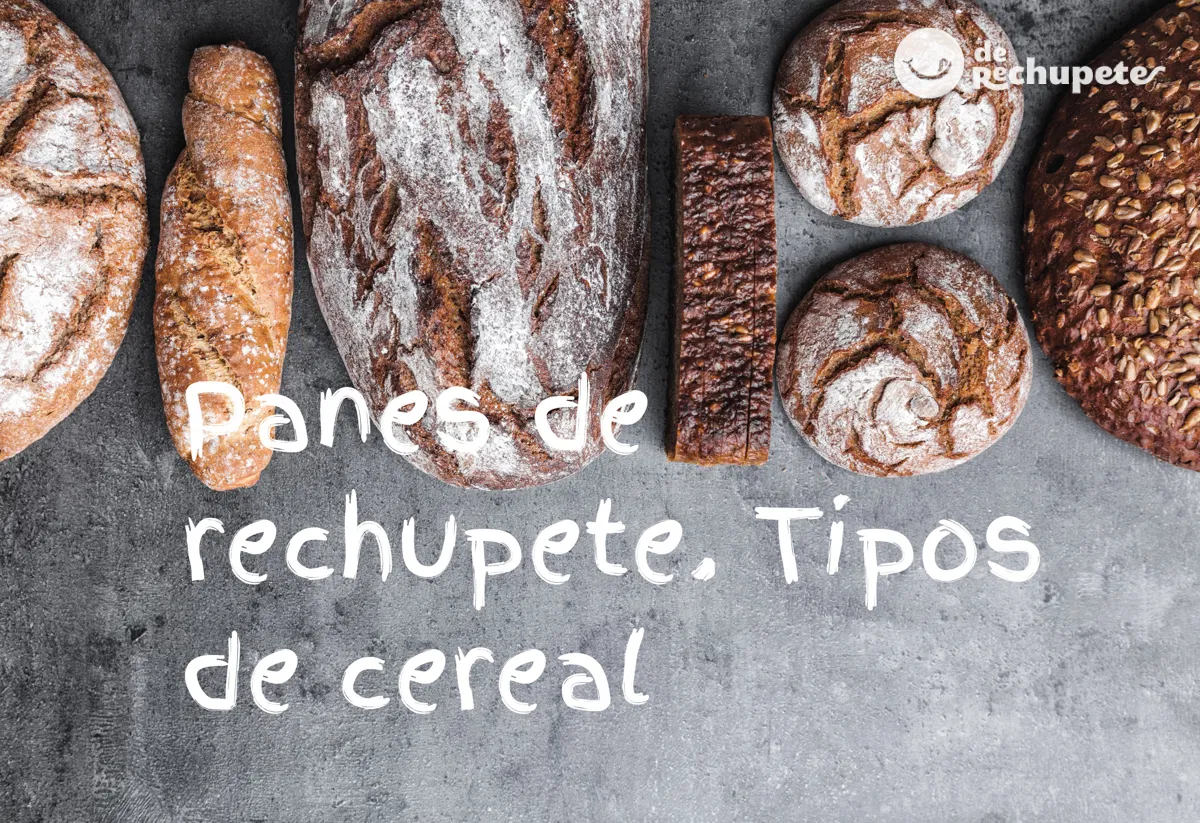Making bread at home can seem tricky, but with the right tips, you can bake delicious bread every time. In this blog post, we will share “5 consejos para hacer el mejor pan” that will turn your kitchen into a bakery. From choosing the best ingredients to perfecting the baking process, these simple tips will help you make bread that’s soft and tasty.
If you follow these “it,” you’ll be on your way to becoming a bread-making pro. No more store-bought bread—your homemade loaves will be fresher and more flavorful. Let’s dive into these easy-to-follow tips and start baking!

5 consejos para hacer el mejor pan Choose the Right Flour for Your Bread
5 consejos para hacer el mejor pan Choosing the right flour is the first step to making great bread. Different flours have different uses. For example, bread flour has more protein, which helps your bread rise higher and gives it a better texture. Whole wheat flour is healthier but can make the bread denser.
You can also mix flours to get the best of both worlds. Try using half bread flour and half whole wheat flour for a nice balance. Always make sure your flour is fresh for the best results.
When shopping for flour, look for unbleached and organic options if possible. These are usually better for baking and healthier for you. Remember, choosing the right flour is one of the key tips for making the best bread!
5 consejos para hacer el mejor pan The Importance of Water Temperature
5 consejos para hacer el mejor pan Water temperature is very important in bread making. If the water is too hot, it can kill the yeast. If it’s too cold, the yeast won’t activate properly. The perfect water temperature is like warm bath water, around 100°F to 110°F.
Using the right temperature helps your dough rise well. Warm water wakes up the yeast, making your bread light and fluffy. Always check the water temperature with a thermometer to be sure it’s just right.
When mixing the dough, add the water slowly. This helps you control the temperature better. Getting the water temperature right is a key step in baking the best bread.
How to Knead Dough Like a Pro
Kneading the dough is a fun part of bread making. It helps mix all the ingredients well and builds the gluten. This makes the bread chewy and delicious. You need to knead the dough for about 10 minutes.
Start by pushing the dough away from you with your palms. Then fold it back over itself and turn it. Keep doing this until the dough is smooth and elastic. If it gets too sticky, add a little more flour.
Kneading can be hard work, but it’s also relaxing. Put on some music and enjoy the process. Good kneading is one of the top tips for making the best bread.
Letting Your Dough Rise Properly
Letting your dough rise properly is very important. This process is called proofing. It makes the bread light and airy. Put your dough in a warm place and cover it with a towel. Let it rise until it doubles in size, which usually takes about an hour.
A warm, draft-free area is best for proofing. If your kitchen is cold, you can put the dough in the oven with just the light on. The light will create a warm environment.
After the first rise, punch down the dough to release air bubbles. Then shape it and let it rise again before baking. This double rise is one of the essential tips for making the best bread.
Baking Techniques for Perfect Crust and Crumb
Baking the bread properly gives it a perfect crust and crumb. Preheat your oven to the right temperature, usually around 375°F to 425°F. Place a pan of water in the oven to create steam. This helps make the crust crispy.
Put your bread on a baking sheet or in a loaf pan. Bake it until it’s golden brown and sounds hollow when tapped. This usually takes about 30 to 40 minutes.
Let the bread cool before slicing. This helps it set properly and makes it easier to cut. Perfect baking techniques are key to making the best bread.
5 consejos para hacer el mejor pan Common Mistakes to Avoid When Making Bread
5 consejos para hacer el mejor pan Avoiding common mistakes can help you make better bread. One mistake is not measuring ingredients properly. Always use a kitchen scale for accuracy. Another mistake is using old yeast. Make sure your yeast is fresh and active.
Overkneading or underkneading the dough can also be a problem. Knead until the dough is smooth but don’t overdo it. Too much flour can make the bread dry, so add flour slowly as needed.
Not letting the dough rise enough is another mistake. Give it enough time to double in size. Avoid these mistakes to master making the best bread.
Tools You Need for Bread Baking
5 consejos para hacer el mejor pan Having the right tools makes bread baking easier. You need a good mixing bowl and a sturdy spoon for mixing the dough. A kitchen scale helps you measure ingredients accurately.
A thermometer is useful for checking water and dough temperature. A dough scraper helps with kneading and shaping the dough. You’ll also need a baking sheet or loaf pan for baking the bread.
A cooling rack is handy for letting the bread cool after baking. These tools are essential for following the best tips for making great bread.
How to Store Homemade Bread
Storing homemade bread properly keeps it fresh longer. Once the bread is cool, store it in a bread box or paper bag. This keeps the crust crispy and prevents mold.
Avoid using plastic bags as they make the bread soggy. You can also freeze bread if you made too much. Slice it first and wrap it tightly in plastic wrap and foil.
To thaw frozen bread, leave it at room temperature or toast it. Proper storage is part of the best tips for enjoying fresh bread every day.
Easy Bread Recipes to Try at Home
5 consejos para hacer el mejor pan Trying different bread recipes can be fun and delicious. Start with a simple white bread recipe. It’s easy and perfect for beginners. Once you’re comfortable, try whole wheat bread for a healthier option.
You can also make fun bread like garlic bread or cheese bread. These are great for special occasions. Sweet breads like cinnamon rolls are a treat for breakfast or dessert.
Experimenting with different recipes helps you learn more about bread making. Follow the best tips to try new and exciting bread recipes.
Baking Bread with Kids: Fun and Easy Tips
Baking bread with kids can be a delightful and educational activity. Start by letting them help measure the ingredients. Kids love to pour flour and sugar into the mixing bowl. It’s a great way to teach them about measurements and following recipes.
Kneading dough is especially fun for kids. It’s like playing with playdough but better because you get to eat the results! Show them how to push, fold, and turn the dough. This can be a fantastic way for them to develop their motor skills.
As the dough rises, explain to them how yeast works and why it’s important. This can be a mini science lesson. Baking bread together can create wonderful memories and instill a love for cooking in your kids. It’s a simple and fun way to bond as a family.

Using Natural Ingredients for Healthier Bread
Using natural ingredients can make your bread healthier and tastier. Choose whole grain flours for added fiber and nutrients. Whole wheat, spelt, and rye flours are excellent choices. They give your bread a hearty flavor and are better for you.
Honey and molasses are good natural sweeteners. They add a rich taste and extra moisture to the bread. Avoid using refined sugars and opt for these healthier alternatives.
For added nutrition, include seeds and nuts in your dough. Flaxseeds, sunflower seeds, and chopped walnuts can make your bread more nutritious. Using natural ingredients not only enhances the flavor but also makes your bread better for your health.
Exploring Different Types of Bread
There are many types of bread you can try baking at home. Sourdough bread is popular for its tangy flavor and chewy texture. It uses a natural starter instead of commercial yeast, giving it a unique taste.
Focaccia is an Italian flatbread that’s easy to make. It’s soft and airy, usually topped with olive oil, herbs, and sometimes olives or tomatoes. It’s perfect as a side dish or for making sandwiches.
Rye bread is another great option. It has a dense texture and a slightly sour taste. Rye bread is often used for sandwiches with strong-flavored fillings like pastrami or corned beef. Exploring different types of bread can be exciting and expand your baking skills.
Tips for Making Gluten-Free Bread
5 consejos para hacer el mejor pan Making gluten-free bread can be a bit challenging, but it’s definitely possible with the right tips. Start by using a good gluten-free flour blend. These blends usually contain a mix of rice flour, potato starch, and tapioca flour to mimic the properties of wheat flour.
Add xanthan gum or guar gum to help bind the ingredients together. These are essential for giving gluten-free bread the right texture. Without them, the bread can be crumbly and dry.
Pay close attention to the dough’s consistency. Gluten-free dough is usually wetter and stickier than regular dough. Don’t be tempted to add more flour; this can make the bread dense. Follow these tips to enjoy delicious gluten-free bread.
The Benefits of Homemade Bread
Homemade bread has many benefits over store-bought bread. One of the biggest advantages is that you control the ingredients. You can avoid preservatives, artificial flavors, and excessive sugars commonly found in commercial bread.
Freshly baked bread tastes much better than store-bought. It has a better texture, and the flavor is richer. You can also customize your bread by adding herbs, spices, nuts, or seeds.
5 consejos para hacer el mejor pan Baking bread at home is also more economical. The cost of ingredients is often lower than buying a loaf from the store. Plus, the satisfaction and joy of baking your own bread make it even more rewarding.
How to Make Sourdough Starter from Scratch
Making a sourdough starter from scratch is a fun and rewarding process. It takes about a week to develop a strong starter. Begin by mixing equal parts of flour and water in a jar. Cover it with a cloth and let it sit at room temperature.
Every day, discard half of the mixture and add more flour and water. Stir it well. You should start seeing bubbles after a few days, which means the yeast is active. The mixture will also develop a tangy smell.
After about a week, your starter will be ready to use in recipes. Keep it in the fridge and feed it once a week to maintain its strength. A homemade sourdough starter adds a unique flavor to your bread and is a great way to explore natural fermentation.
Troubleshooting Common Bread Baking Problems
Even experienced bakers encounter problems sometimes. If your bread isn’t rising, check your yeast. It might be old or inactive. Make sure your water is the right temperature, not too hot or cold.
If your bread is too dense, you might have used too much flour or not kneaded it enough. Make sure the dough is soft and elastic. Letting the dough rise properly also helps in getting a light and airy texture.
For a bread that’s too dry, try adding a bit more water to the dough next time. Also, avoid overbaking. Troubleshooting common problems can help you improve your baking skills and ensure you always get the best results.
Adding Flavors to Your Bread
Adding different flavors to your bread can make it more interesting and delicious. Herbs like rosemary, thyme, and basil can give your bread a fragrant aroma. Mix them into the dough or sprinkle on top before baking.
Cheese is another great addition. Cheddar, parmesan, or feta can make your bread rich and savory. Fold cheese chunks into the dough or grate it on top for a crispy crust.
For a sweet twist, try adding cinnamon, raisins, or chocolate chips. These make your bread a perfect treat for breakfast or dessert. Experimenting with flavors is a fun way to create unique and tasty bread.
The Art of Shaping Bread
Shaping the bread properly can make a big difference in the final product. Start by flattening the dough into a rectangle. Fold the long edges into the center, then roll it tightly from the short end. This creates tension in the dough, helping it hold its shape during baking.
For rolls or buns, divide the dough into equal pieces. Roll each piece into a tight ball by tucking the edges underneath. Place them close together on a baking sheet so they rise upwards instead of spreading out.
Learning different shaping techniques can give your bread a professional look. Practice makes perfect, so keep trying until you get the shape you like.
Tips for Baking Bread in Different Climates
Baking bread in different climates can affect the dough. In humid areas, the dough might need less water. Keep an eye on the dough’s consistency and adjust accordingly. It should be soft but not sticky.
In dry climates, the dough might dry out quickly. Cover it with a damp cloth during rising to keep it moist. You might also need to add a bit more water to the dough.
Temperature can also affect rising times. In warmer climates, dough rises faster. In colder climates, it takes longer. Adjust your proofing times based on the room temperature to ensure perfect results.
Baking Bread in a Bread Machine
Using a bread machine can make baking bread easier. Simply add the ingredients to the machine in the order recommended by the manufacturer. Usually, liquids go first, then dry ingredients, and finally yeast on top.
Set the machine to the appropriate program, and let it do the work. Bread machines mix, knead, and bake the bread all in one container. They are great for busy people who still want homemade bread.
Some machines also have settings for different types of bread, like whole wheat or gluten-free. Using a bread machine can help you enjoy fresh bread with less effort.
Enhancing Bread with Seeds and Grains
Adding seeds and grains to your bread can boost its nutrition and flavor. Sunflower seeds, sesame seeds, and flaxseeds are popular choices. They add a nice crunch and are packed with nutrients.
Oats and barley can also be mixed into the dough. They give the bread a hearty texture and make it more filling. Whole grains are a good source of fiber, which is important for a healthy diet.
Sprinkle seeds on top of the bread before baking for a decorative touch. Enhancing your bread with seeds and grains can make it healthier and more delicious.

Conclusion:
Enjoying homemade bread is the best part of baking. Fresh bread tastes amazing and is healthier than store-bought. Share it with family and friends for a special treat. Making bread at home is a rewarding experience. It brings joy and satisfaction.
Using these tips will help you bake perfect bread every time. Keep practicing and trying new recipes. Soon you’ll be a bread baking pro. Enjoy your homemade bread and happy baking!

